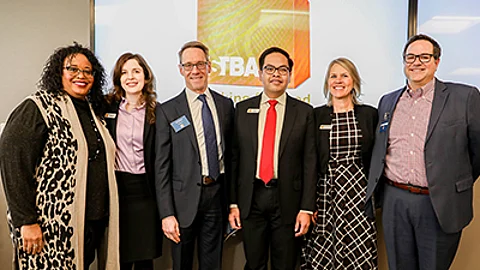

Lakewood, Colo.-based FirstBank has, for decades, sought customers and recruited employees in order to build a business that reflected the diversity of its markets. In an effort to expand this vision, it created a Multicultural Banking Center, which opened in March 2020, just three weeks before pandemic-related shutdowns.
As it turned out, those Covid-19 closures didn't derail FirstBank's momentum. "We were able to assist a lot of our minority-owned businesses when the pandemic hit," said Tony Oum, executive vice president of multicultural banking, whose team reached out to minority chambers of commerce and welcomed new customers in those uncertain days.
The Multicultural Banking Center is only the latest iteration of the Denver-area bank's interest in underserved communities. In 1993, the bank's president placed an ad in a Chinese-language newspaper asking individuals to contact him with their banking needs. "And from there, it started growing," Oum said. "He really educated the Chinese community about the importance of opening up a bank account, about saving money and eventually getting into their first homes."
In the years to follow, FirstBank amplified its efforts to hire diverse and bilingual employees; it also added a specialized focus on the banking needs of Asian, Hispanic and Black residents. Today's bank employees speak 40 languages collectively.
"Our employees mirror our communities and also our customer demographics mirror the communities," Oum said.
In some underserved communities, there is greater mistrust of banking institutions because of historical experiences, Oum explained. When bank staff understands the language and culture, that helps people feel more comfortable.
Once relationships were established, business grew by word of mouth. Starting the focused Multicultural Banking Center has furthered relationships and opportunities for individuals in underserved groups, including Black Americans.
"Since we had our grand opening in 2020, we've seen really strong growth from a loan perspective and from a deposit perspective from those communities," Oum said. "We're making a difference and I think that's really important."
Starting the Multicultural Banking Center meant that FirstBank dedicated a specific leadership team with a singular concentration on this effort, said Amber Hills, president of both the Multicultural Banking Center and the $27.8 billion bank's southwest market.
"It has given us the ability to take it to the next level and really ensure that we are listening to the community, providing products and services that are needed, addressing language needs, addressing whether or not there are gaps in what we're offering from a financial services perspective, putting together groups of folks that are able to help with educational pieces that might be needed in certain communities," Hills said.
Providing access to first homes
FirstBank's goals include helping underserved families and individuals build wealth through homeownership. Its Providing Access To Homeownership (PATH) program offers home-buying grants to Black Americans to help counteract the racial wealth gap.
The bank has dedicated $1 million to the program and partnered with the Colorado Housing and Finance Authority, which added another $750,000. Initially, FirstBank awarded $20,000 grants to 50 qualifying individuals or families for down payments; it now provides $15,000 grants for another 50 buyers.
The bank's lending programs for non-U.S. citizens are an area where other banks have not yet recognized the need or gained comfort in lending, Hills said.
FirstBank offers classes in financial education in a variety of languages. Clients get lessons on building credit, saving and home buying. "Those are just a couple examples, but we've tried to figure out how we can better serve the community and continue to stay within the confines of what we're allowed to do as a bank," Hills said.
Sometimes people count themselves out of buying a house because they don't feel like they can ever save enough, especially as they watch home prices rise, Hill said.
"A lot of the program recipients have just kind of had a light bulb go off and say, 'Oh, I had no idea that I'd ever be able to be a homeowner,'" Hill said. People helped by the program begin to understand that generational wealth is built through home ownership.
It's good business
While the bank has long had its eye on diversity, it added a DEI director last August, appointing Sean Choi from within its ranks. Choi explained that one of the bank's strategic initiatives is "include all."
It's good for the bank for a number of reasons, including that diversity leads to innovation, like the Multicultural Banking Center.
"These things came about because there were employees who had these experiences of, 'I know what it's like to go into a bank and not have anyone that looks like me or speaks my language,'" Choi said.
While the focus has enabled the bank to grow its customer bases, it's not all about money. Its mission and values are part of bank culture. "It feels like this is just important to our mission in doing the right thing, too," Hills said. "And I think that that gives employees an incentive to stick around … to try harder. I think it adds value from a lot of different perspectives."
Feedback has been positive. In February, the bank received the Martin Luther King, Jr. Business Award, which is bestowed by a commission composed of 14 civic organizations and chambers of commerce within Colorado. Among the reasons cited by the bank for receiving the award were its contribution of nearly $75 million to nonprofit groups since 2000, including to many organizations focused on diversity, equity and inclusion.
Additionally, roughly half of the bank's management roles are filled by women and 40 percent of its employees are either individuals from underserved communities, veterans or people with disabilities.